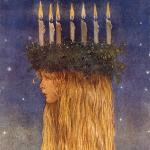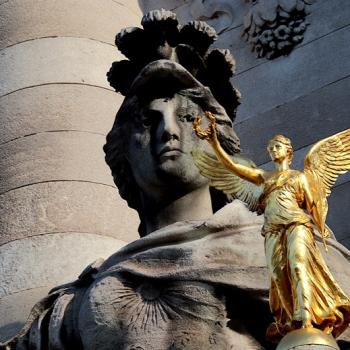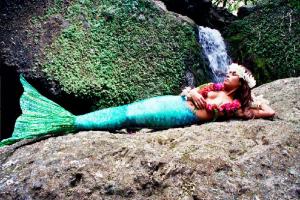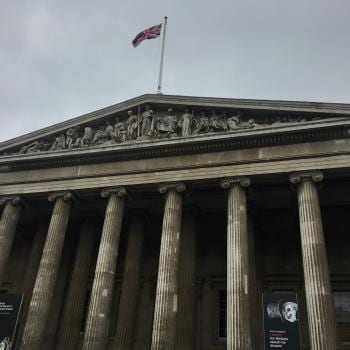The concept of a mother goddess is one as old as humanity itself. Much of the world’s earliest art, such as the Venus of Willendorf, is speculated to be a representation of a mother goddess idol. Therefore, it is no wonder that in Western Art we continue to find the dominance of the mother goddess. This time, however, she is in disguise; hidden from the oppressing theology of monotheism as Mary-Mother of God (Gadon, 206). Despite having quite a minor role in scripture, Mary became and still is one of the most dominant figures in all of Christendom. We can see the evolution of her person hood by examining artistic renditions of her at various points in art history.
For the first 400 or so years after the death of Christ, the identity and importance of Mary was in question. Finally, in AD 431 at the Council of Ephesus, Mary was proclaimed to be the Theotokos or literally ‘Birth-Giver of God’. This gave precedence to Marian veneration and prompted the birth of the Cult of the Virgin as it stands today (Gadon, 202-206). The earliest artistic representations that we have of Mary are what are known as icons. These are usually Orthodox paintings on wood, metal, or stone intended to be “independent devotional images” (Stokstad, 257). Unfortunately, many of the earliest icons were destroyed during the iconoclasm, when the Church decided to forbid images because they were deemed ‘too pagan’.
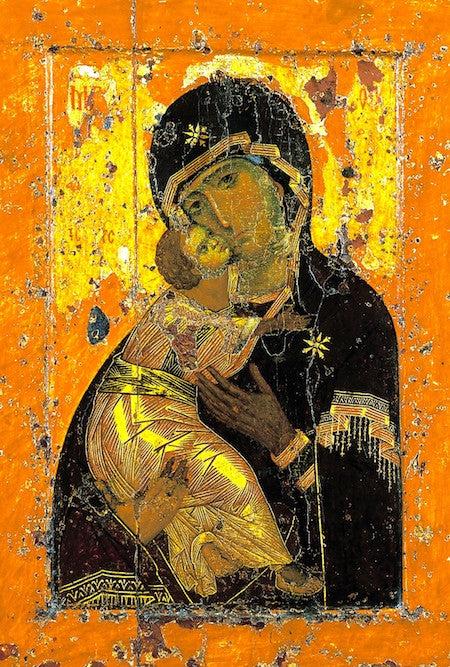
One of the most famous images is known as the Theotokos of Vladimir (right), aptly named for the Russian city it was brought to after an invasion of Constantinople. This is universally considered to be one of the finest pieces of early iconography. It is tempera on wood and is in the iconic style known as Elousa (Virgin of Compassion), which represents the Virgin and Child in an embrace. This is intended to represent the Church of Christ, showing the love between God and man. A love that is only achieved through the bosom of the Church, the Mother. Here we can see that although not in her full form as mother goddess, Mary is given a divine role based exclusively on her role as mother. A change that occurred due to a need among the people of the Church to connect with the divine in a more intimate way, “This distinctively humanized image is another example of the growing desire for a more immediate and personal religion” (Stokstad, 258).
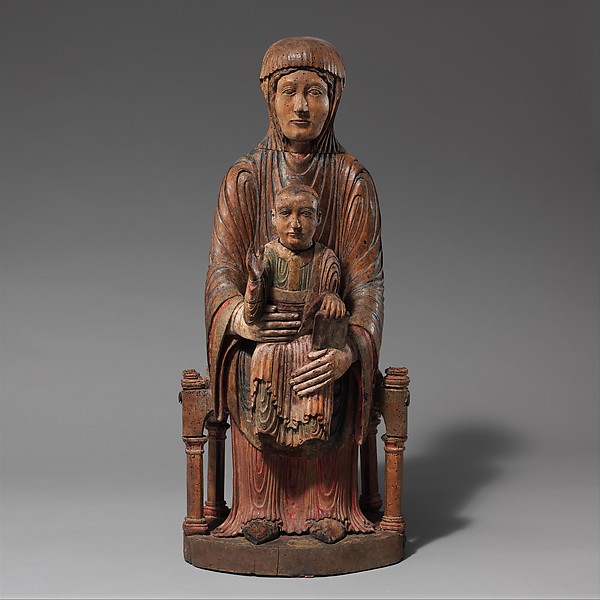
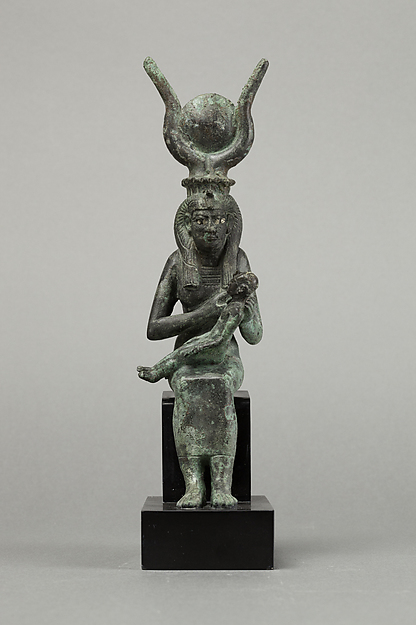
During the Romanesque period we see the concept of the Theotokos taken a step further in the representation of Mary as the “Throne of Wisdom”. As we can see in the Enthroned Virgin and Child (left), Mary is now seated on a throne. Sitting on her lap is the young Christ child. Both are facing forward, in a rigid upright posture, emulating regal power. Mary “As Mother and ‘God-bearer’ (Theotokos) gave Jesus his human nature”(Stokstad, 485). Like earlier mother goddess figures, such as Isis, Mary had become the throne that legitimized the rule of her son, “images of the Virgin and Child call to mind Egyptian representations of Isis nursing her son Horus” (Met Museum).
During the next few hundred years, the cult of Mary grew tremendously. She quickly became one of the central figures in an ever expanding religion. With this burgeoning popularity, came works dedicated in her honor. During the Gothic period, most of the major cathedrals were given the title Notre Dame (Our Mother) for this very reason. It was also during this period, that the role of Mary began to shift. No longer simply a divine vessel, she became the Queen of Heaven in her own right.
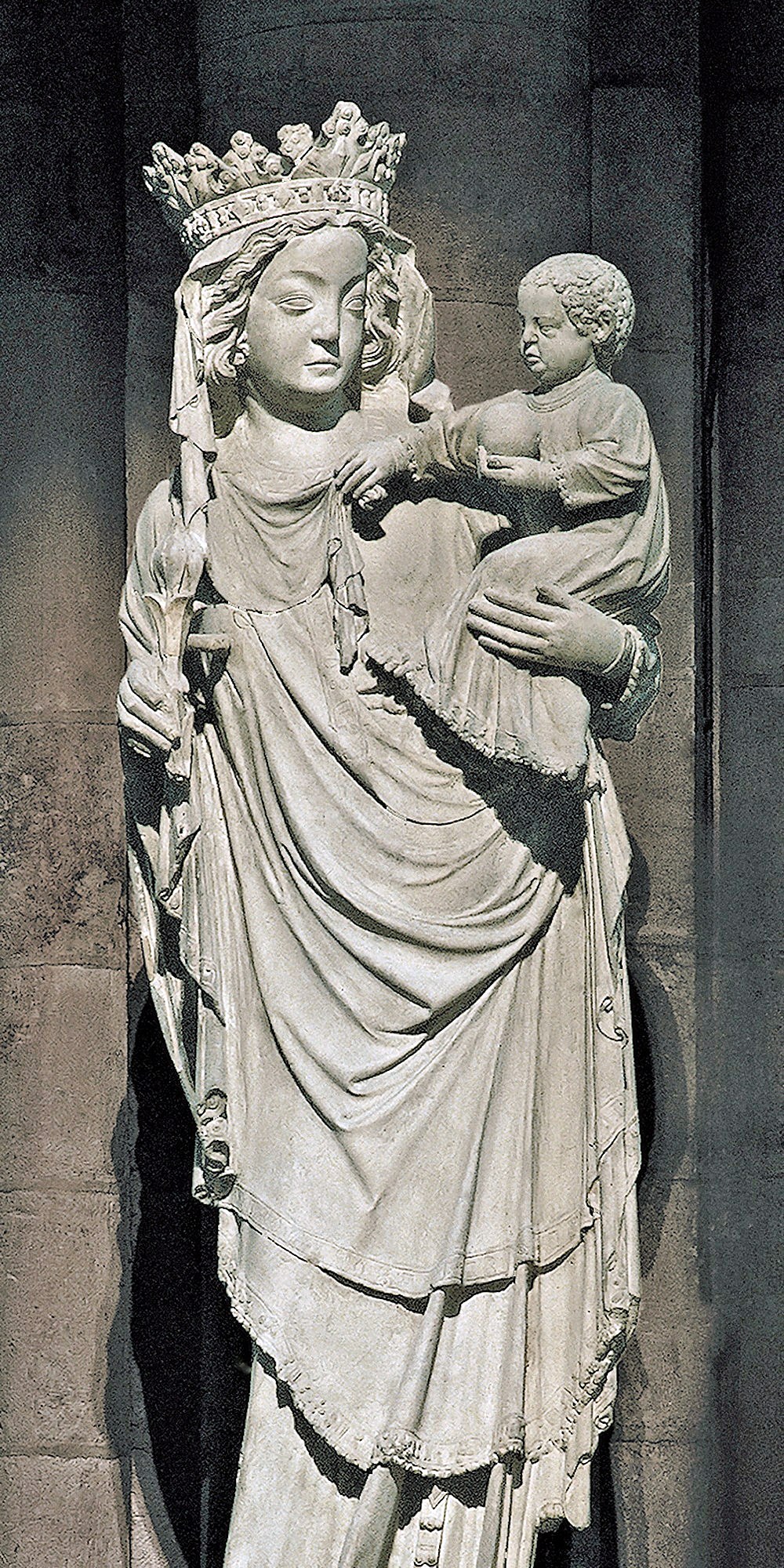
The Virgin of Paris (left), found in Notre Dame de Paris is a perfect example of this. Here we find Mary, standing up right, crowned and regal, draped in jewels as befits a queen. Carved from stone and sculpted in the round, the style is entirely different than earlier representations. She is still holding the infant Christ but she is clearly the central figure. She appears to be almost Classical in style. Her body is draped in fabric, completely concealing her feminine figure. Her body is swaying in an S shape, an effect used to project elegance. The figure of Mary had evolved from a divine vessel, useful simply for her womb, to one that demanded respect as the chosen Queen of God. Here, also for the first time, we see a strong emphasis on the relationship between mother and child. She is holding the Christ child perched on her hip. Christ himself, looks more like an actual child than he does in most earlier representations where he typically resembles a small adult. He is holding a ball (symbol for the Church) and seems to be playfully reaching toward his mother. This only serves to emphasize Mary’s role as the Divine Mother, suggesting the immense power she had as Mother of God.
These three pieces, the Theotokos of Vladimir, Enthroned Virgin and Child, and the Virgin of Notre Dame, represent pivotal points in history, not only within art but within Christian theology. Mary emerged from a place of obscurity to become one of the most important figures in a religion dominated by men. Although still debated today in certain religious circles, Mary is generally acknowledged as the ‘Birthgiver of God’ which therefore gives her an almost divine status. Moreover, this title developed to legitimize the rule of Christ as seen through Mary as the “Throne of Wisdom”. Within the Roman Catholic Church, she has further become the Queen of Heaven; uniting with the totality of the godhead.
In my opinion, Mary represents to Western society the cultural memory of the mother goddess. Despite the efforts of patriarchal monotheism over the course of the last 2000 years to suppress her, the mother goddess has lived on; albeit in many different forms. I’ll leave you with this quote from the Book of Jeremiah, which I feel perfectly summarizes why it was impossible to quell worship of the mother goddess.
“We will certainly do everything we said we would: We will burn incense to the Queen of Heaven and will pour out drink offerings to her just as we and our ancestors, our kings and our officials did in the towns of Judah and in the streets of Jerusalem. At that time we had plenty of food and were well off and suffered no harm.” -Jeremiah 44:17
The Old Testament Israelite’s did not want to stop worshiping ‘The Queen of Heaven” because when they served her, all was right with the world.

Works Cited:
Gadon, Elinor W. The Once and Future Goddess: A Symbol for Our Time. Harper and Row; San Francisco. 1989
Department of Medieval Art and The Cloisters. “The Cult of the Virgin Mary in the Middle Ages.” In Heilbrunn Timeline of Art History. New York: The Metropolitan Museum of Art, 2000–. http://www.metmuseum.org/toah/hd/virg/hd_virg.htm (October 2001)
https://www.metmuseum.org/art/collection/search/471853
Stokstad, Marilyn. Art History: Medieval Art. Pearson Education, 2014
https://www.khanacademy.org/humanities/medieval-world/latin-western-europe/romanesque1/a/throne-of-wisdom


